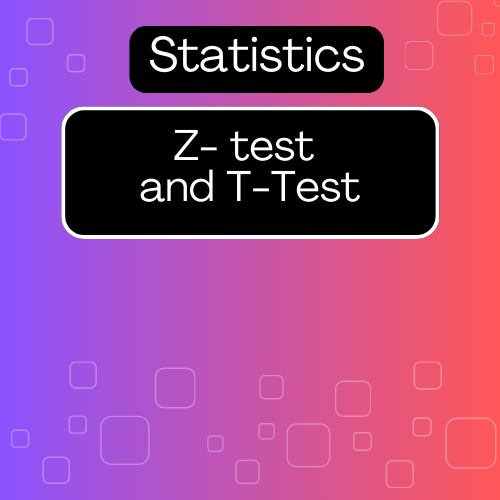Z-Test: A statistical test used to determine if there is a significant difference between sample and population means when the population variance is known and the sample size is large (typically n > 30).
- Types of Z-Tests:
- One-Sample Z-Test: Compares the sample mean to a known population mean.
- Example: Testing if the average height of students in a class is different from the national average height.
- Two-Sample Z-Test: Compares the means of two independent samples.
- Example: Testing if the average test scores of students from two different schools are different.
- One-Sample Z-Test: Compares the sample mean to a known population mean.
T-Test: A statistical test used to determine if there is a significant difference between the means of two groups when the population variance is unknown or when the sample size is small (typically n < 30).
- Types of T-Tests:
- One-Sample T-Test: Compares the sample mean to a known population mean when the population variance is unknown.
- Example: Testing if the average weight of apples in a basket is different from a known average weight.
- Independent Two-Sample T-Test: Compares the means of two independent samples.
- Example: Testing if the average blood pressure differs between two different groups of patients.
- Paired Sample T-Test (Dependent T-Test): Compares means from the same group at different times (before and after).
- Example: Testing the effectiveness of a new diet by comparing the weights of individuals before and after the diet.
- One-Sample T-Test: Compares the sample mean to a known population mean when the population variance is unknown.
